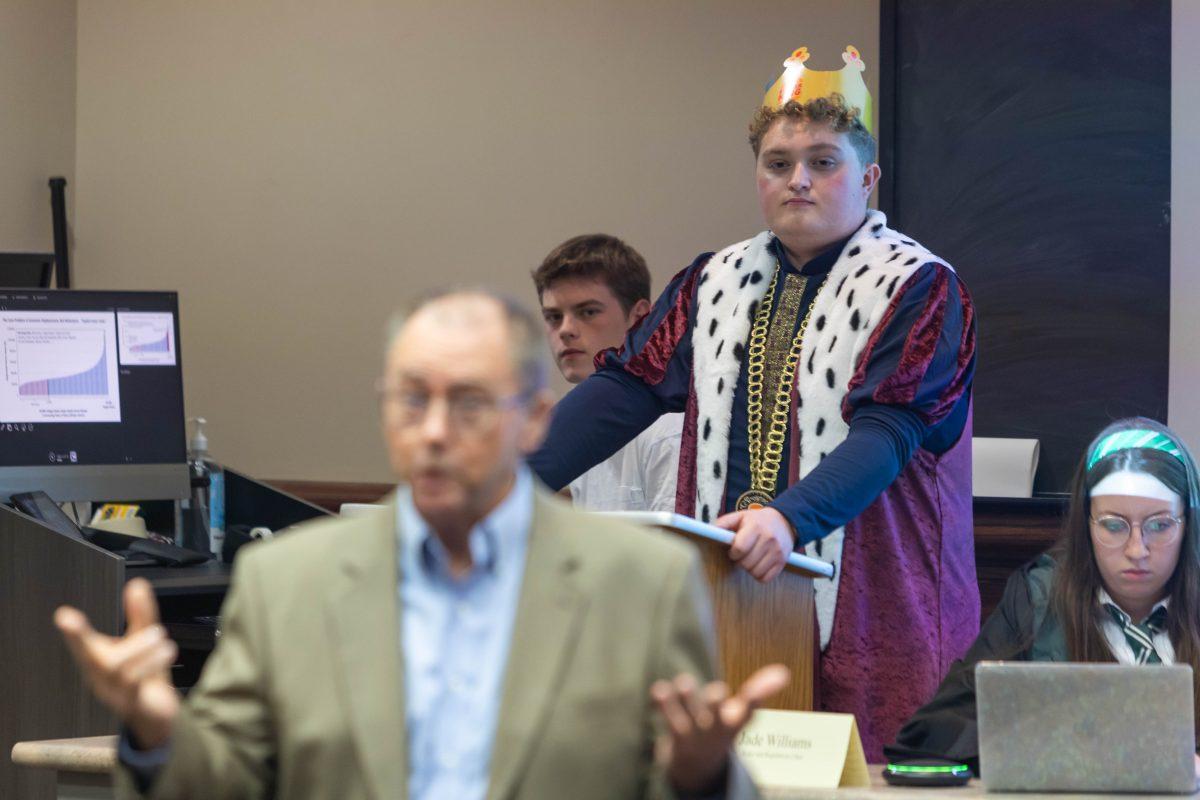After weeks of students advocating for changes to College Station’s no more than four ordinance, Texas A&M’s Student Senate heard arguments from permanent residents.
Per the city ordinance, no more than four unrelated residents can live in a single-family home, which has caused concern for students in violation of the code. For weeks, A&M students and campus leaders have been speaking at City Council meetings to reform or remove the ordinance. Likewise, permanent residents have asked for it to remain.
At its meeting on Oct. 25th, the Student Senate hosted Fred Dupriest, Class of 1977, of the Occupancy Enforcement Alliance in favor of the ordinance and former city Councilwoman and Brazos County GOP Chairman Elianor Vessali, Class of 1998, against the ordinance. These Aggies presented their respective cases followed by a period of questioning by student senators.
During the presentation, Dupriest said student housing is displacing permanent residents in the College Station area.
“My purpose tonight was for [students] to understand the potential impact they were having specifically on our working class,” Dupriest said after the meeting. “Because that [working class housing] is specifically what gets rented, rebuilt, taken over by the student market and it’s a vital part of our city’s economy … We cannot have a healthy city without having a healthy working class.”
Dupriest said regular families cannot compete with students buying these homes because a regular family will likely only have two sources of income while students likely have four or more.
“If you normalize five, six and seven [sources of income], the owners charge rent for five, six and seven because most of the students actually have an expectation of what they’re going to pay … They will actually inflate the market and that’s extremely reliable that that’s going to happen,” Dupriest said afterwards.
The market inflation is due to students’ having more sources of income and being able to borrow more money in comparison to a working-class family, furthering the displacement of locals, Dupriest said.
“The answer is higher density housing that is meant to be cheap,” Dupriest said.
Higher-density housing is a term used to describe multi-story buildings, such as apartment complexes, that can house more people per acre in comparison to houses.
Afterward, Elianor Vesalli argued against the no more than four ordinance.
“Here’s what I have seen and what I think the reality is,” Vessali said. “It’s not only about over occupancy. I’m sorry, this is the truth: it’s about living next to students.”
Vessali said the City of College Station’s actions shows that this issue is not truly about working-class people being displaced.
“If it were about over occupancy, that area [Montclair to Wellborne] is already future-planned by the city to be higher density [housing],” Vesalli said. “If we already know that the city sees it that way, then why is a group going out there and taking pictures regularly and concerned about how many people are in the home if we’ve all already agreed that that is going to be a higher [housing] density area?”
Vessali said investors jacking up prices is not an issue in the present anymore due to A&M joining the SEC in 2012. She said this made land closer to campus much more valuable due to its proximity to Kyle Field, meaning investors would make less profits compared to buying cheap lots.
“Who then wants to live within a block from campus?” Vessali said. “Is it investors now able to buy land to make student rentals? That price has changed. Who are we seeing buying on the south side? Wealthy old Ags coming in. They’re throwing over $350,000 for dirt because they can build their retirement game home.”
Additionally, one of Vessali’s main concerns was local homeowners simply do not want to live next to students. She said a group of vocal homeowners attempted to form a Homeowners Association in certain neighborhoods in order to impose rental restrictions on properties likely to be rented by students. However, they did not have the numbers required by the law to do so.
“They petitioned the city for a process called an overlay … Then, after I was off [the City Council], they petitioned again and convinced them to have these regulations at a threshold of 50% plus one,” Vessali said. “That is how you are seeing a simple majority now completely change regulations in a neighborhood through city ordinance.”
According to Vessali, this group has more planned now that they have influence.
“This same group of people … is working now to put together a group of no more than two on the southside historic [district],” Vessali said. “So again, it’s not about over occupancy, it’s not about the price of housing, it’s about not wanting to live next to students.”
When asked after the meeting about a potential solution to the issues facing students by members of the Student Senate, Vessali emphasized the importance of local politics.
“You’ve got to be registered to vote locally,” Vessali said. “If you’re not, that’s already an issue, especially as SGA members.”
Finally, Vessali said College Station’s lack of housing density has forced students to live in the surrounding area, causing some of these problems.
“And because we have not been able to add [housing] density, then where will all you ‘evil students’ stay?” Vessali said. “All throughout the city.”










